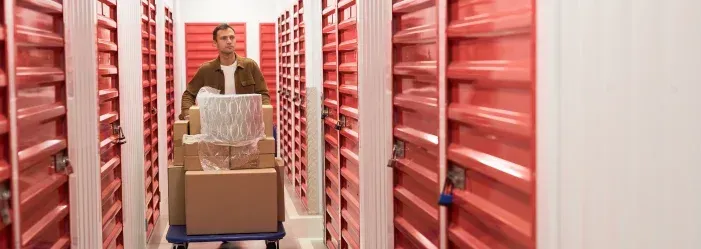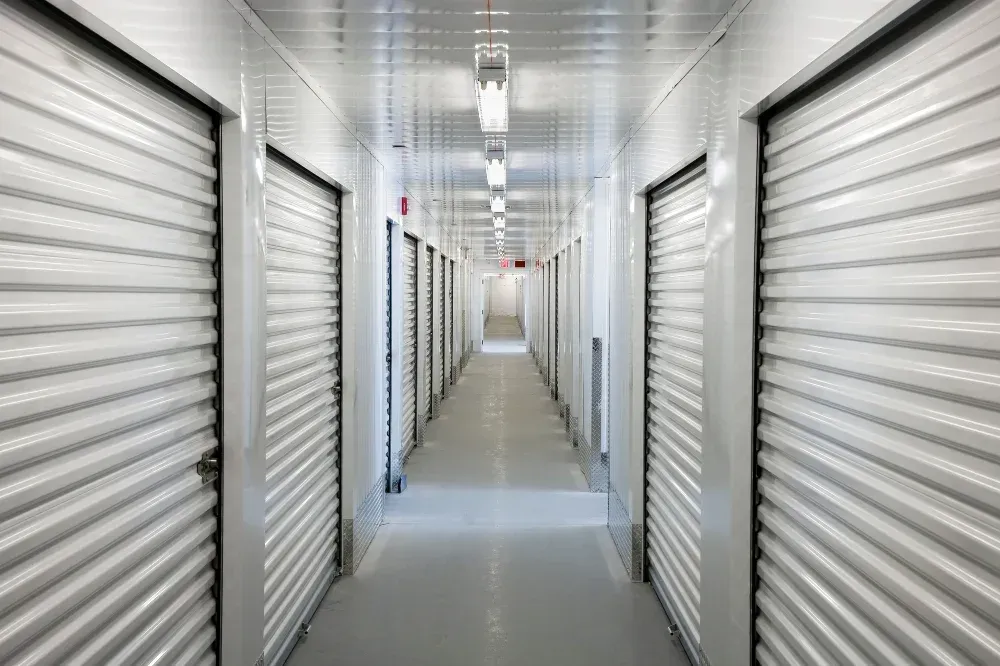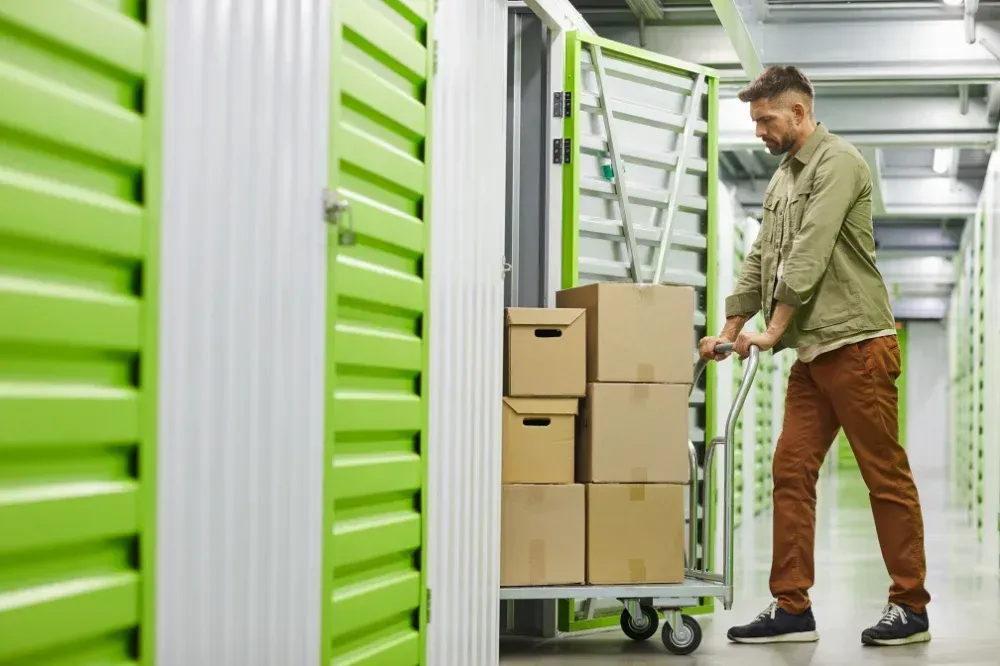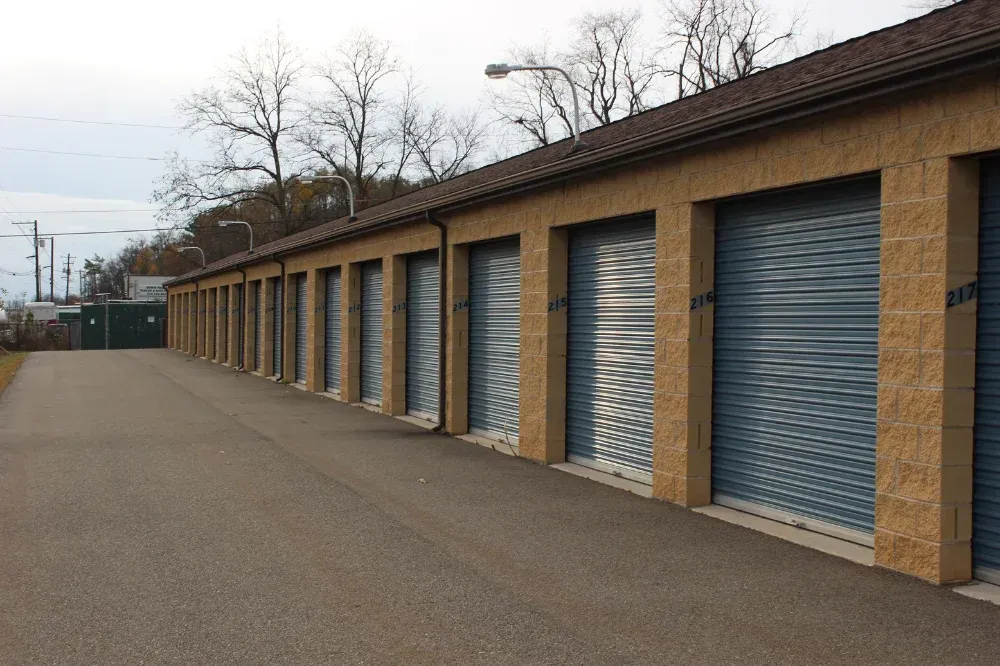How to Keep Your Storage Unit Neat and Accessible
How to Keep Your Storage Unit Neat and Accessible

Renting a storage unit can be a fantastic way to free up space in your home or business. Whether you're storing seasonal items, valuable heirlooms, business inventory, or even just excess furniture, a storage unit can provide an excellent solution for keeping your things organized and accessible. However, it’s easy for things to spiral into chaos without a solid organization plan in place.
If you don’t put in the effort to organize your storage unit properly, you could quickly find yourself in a situation where you can’t find anything, and you waste precious time digging through piles of boxes or furniture. Worse, you could end up renting a unit that’s too large because you haven’t maximized the space efficiently. This can lead to unnecessary costs and frustration.
A well-organized storage unit is not just about aesthetics. It plays a key role in protecting your belongings, making them easier to access, and saving you money on renting the appropriate size unit. The good news is that organizing a storage unit doesn’t need to be a daunting task. By following a few essential steps and using the right strategies, you can keep your storage space neat and accessible. Let’s take a look at how to do it.
Why Organization is Important for Your Storage Unit
When it comes to storing your belongings in a unit, organization is the key to making the most of the space and ensuring the safety of your items. Here are some key reasons why keeping your storage unit organized is so important:
- Saves Time and Stress – The most obvious benefit of an organized storage unit is that it makes it easier to find what you need when you need it. Without organization, you’ll waste time sifting through piles of boxes and furniture, which can cause unnecessary stress, especially if you need something urgently.
- Maximizes Available Space – Proper organization helps you make the most of the space inside your storage unit. Without a plan, your items might end up being scattered around, taking up more space than necessary. With the right layout, you can store more items in a smaller unit, potentially saving you money.
- Protects Your Belongings – Storing items haphazardly can lead to damage. Stacking boxes too high, not securing fragile items, or blocking important pathways can all cause your belongings to suffer. A well-organized unit ensures that everything is stacked safely and that fragile items are properly protected.
- Improves Safety – A cluttered storage unit can be dangerous. Things can easily topple over, creating hazards, or cause you to trip. Maintaining clear paths and stacking items securely ensures that your storage unit remains a safe environment.
- Prevents Unnecessary Costs – Without organization, you may find that your unit is packed inefficiently, and you end up needing more space than you actually require. A well-organized unit helps you maximize space, potentially allowing you to rent a smaller, more affordable unit.
With these benefits in mind, it’s clear that the effort you put into organizing your storage unit will pay off in the long run. Now, let’s explore the best strategies to help you achieve an organized and accessible storage space.
Choosing the Right Storage Unit
Before you begin organizing, it’s essential to choose the right storage unit for your needs. Picking the right size and type of unit can make a big difference in how easy it is to stay organized.
Assess Your Needs
The first step in choosing the right storage unit is assessing what you need to store. The type and volume of items will help determine the size of the unit you need. Here are some questions to ask yourself:
- What type of items are you storing? Are they furniture, personal items, business inventory, or documents?
- How often will you need to access these items? Are they seasonal, or will you need to retrieve them frequently?
- Are there any special considerations, such as climate-sensitive items or items that require extra protection?
Pick the Right Size
Storage units come in various sizes, typically ranging from small 5x5 units (about the size of a small closet) to large 10x30 units (which can accommodate the contents of a large house). Consider the amount of space your belongings will take up and choose the unit accordingly.
For smaller items like boxes of clothing or seasonal decorations, a small unit might be sufficient. However, if you’re storing large furniture, appliances, or a significant amount of business inventory, you might need a larger space. If you’re unsure, many storage facilities offer guides that can help you estimate the right size for your needs.
Climate-Controlled vs. Standard Units
If you’re storing items that are sensitive to temperature and humidity, such as electronics, documents, artwork, or antiques, consider renting a climate-controlled unit. These units maintain a consistent temperature and humidity level, preventing damage from moisture or extreme temperatures. On the other hand, if you’re simply storing non-sensitive items like furniture or boxes, a standard unit should suffice.
Designing an Efficient Layout for Your Storage Unit
Once you’ve selected the right unit, the next step is to plan out an efficient layout for your storage space. An organized layout ensures easy access to your items and maximizes available space.
Plan Ahead
Start by sketching a rough diagram of your storage unit. The goal is to create a clear, accessible layout that makes it easy to find and retrieve your belongings. Some storage facilities provide layout guides to help you plan your space, or you can simply measure the unit and take notes on how best to use it.
Place Frequently Used Items Near the Front
When organizing your storage unit, always place items that you access frequently toward the front. This minimizes the effort it takes to retrieve them and ensures that you don’t have to dig through piles of boxes to find what you need. For example, if you are storing seasonal items like holiday decorations, place them toward the back of the unit, but if you need access to sports gear or business supplies, put them near the front.
Group Items by Category
Organizing your items into categories makes it easier to find specific things later. For example, you can group all your holiday decorations together, your seasonal clothing in another section, and your business inventory in yet another area. Label each section so you can quickly locate what you need.
Leave an Access Path
Ensure that there is a clear path running through the center of the unit. You should be able to walk into the unit and access items from all sides without having to move too many things around. This is especially important for larger units where you may have to navigate around bulky furniture or large boxes.
Utilizing the Right Storage Supplies
The right supplies can make a world of difference in maintaining an organized storage unit. By investing in sturdy containers, shelves, and labels, you can keep your items secure and easy to access.
Use Sturdy Boxes and Bins
One of the easiest ways to keep your unit organized is by using sturdy boxes and plastic bins. These help protect your belongings from dust, dirt, and moisture. Clear plastic bins are ideal for visibility, as they allow you to see the contents without having to open them. Make sure that the boxes you use are durable and able to support the weight of the items you plan to store.
Shelving Units
Shelving can help you make better use of the vertical space in your storage unit. Free-standing shelves or adjustable shelving units can be particularly helpful for keeping small items off the floor and within easy reach. They also prevent items from being crushed under heavy boxes.
Labels and Markers
Labeling is essential for easy identification. Use large, clear labels that list the contents of each box. Consider using a color-coding system to make it even easier to identify boxes based on category, such as red for holiday decorations or green for household items. Be sure to label boxes on multiple sides so you can easily spot the labels even if they’re stacked.
Maximizing Space and Storing Items Efficiently
Efficient use of space ensures that you can store more without needing to rent a larger unit. Here are some tips for maximizing space and keeping everything in good condition.
Use Vertical Space
Stacking items vertically can help you store more in a small area. Use shelves to keep smaller items organized and stack boxes on top of one another. Always stack heavier boxes at the bottom and lighter ones on top to prevent crushing. If you have large items like furniture, consider disassembling them and storing the pieces vertically along the walls.
Strategically Store Large Items
When storing large items like furniture, appliances, or equipment, place them near the back of the unit to keep the front area open for easy access. If possible, disassemble large furniture pieces (like bed frames or tables) to save space. Store smaller pieces, such as cushions or legs, inside the larger items to make better use of space.
Protect Fragile Items
If you're storing fragile or delicate items like glassware, electronics, or antiques, be sure to pack them carefully. Use bubble wrap, packing paper, or foam to cushion these items. Place them in sturdy boxes and clearly mark them as fragile so that they’re handled with care.
Secure Important Documents
For important documents, consider investing in waterproof, fireproof storage boxes. This will keep your important papers, such as legal documents, business records, and family heirlooms, safe from damage due to moisture, fire, or pests. You can also digitize important documents to reduce physical storage needs.
Long-Term Storage Maintenance
Once your storage unit is organized, it’s essential to maintain that order. Over time, clutter can accumulate if you don’t regularly check your unit and make adjustments. Here are a few tips for keeping your unit organized long-term:
Routine Inspections
Visit your storage unit periodically to ensure everything is in good condition. Check for any signs of moisture, pests, or damage to your belongings. If you notice any problems, take care of them immediately to prevent further damage.
Reorganize as Needed
If you add new items to your unit, take some time to reorganize the space to accommodate them. Update your labels and inventory to reflect any new items and ensure that your storage unit remains accessible.
Rotate Seasonal Items
If you’re storing seasonal items, rotate them regularly to ensure that you don’t forget about any items that you need to access. For example, you can switch out holiday decorations for summer gear or swap out winter clothing for warmer-weather items.
Conclusion
Staying organized in your storage unit is not just about keeping things neat — it’s about making your life easier and ensuring that your belongings are kept safe and accessible. By choosing the right unit, planning your layout, using the right supplies, and maintaining your unit over time, you’ll ensure that your storage space works as efficiently as possible. With a little effort upfront, you’ll save time, reduce stress, and make the most out of your storage unit.
Business Locations
Contact Us!









